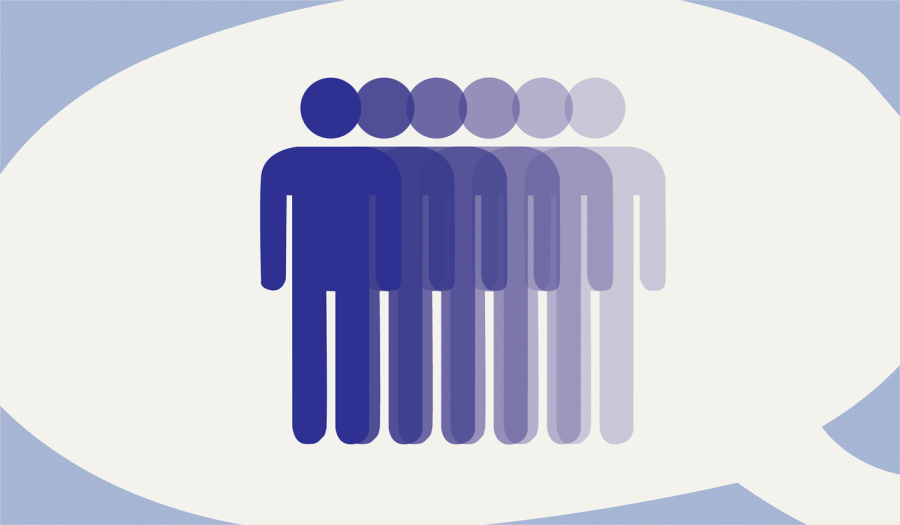U Staff Recognize Male Victims of Domestic Violence
(Graphic by Mary Allen | The Daily Utah Chronicle)
November 20, 2022
When his girlfriend snapped one day about two years ago, Salt Lake City man Josh Murray was physically abused. He told Fox 13 news that the way he saw “the woman he knew and loved for [over 10] years changed in an instant.”
Murray, because of his personal experience and goal of eliminating some of the gender bias around domestic violence, is currently working to create an all-male shelter for male victims of domestic violence.
Myra Gerst, the engagement coordinator at the Center for Student Wellness, said the issue of domestic violence is commonly framed as a women’s issue and excludes men because women were the ones who originally started advocating against domestic violence. Men are also the ones most often causing harm, with men perpetrating more than 90% of all domestic violence crimes according to the University at Albany.
“Historically, women, especially BIPOC women, are the ones to kind of start this movement,” Gerst said. “We have a lot to learn from the history of violence prevention.”
Men perpetrate the majority of domestic violence crimes on college campuses as well, said Whitney Hills, associate director of education at the McCluskey Center for Violence Prevention. According to psychologist Jim Hopper, 4-16% of college men report committing rapes. About one in five college women are victims of sexual assault.
While these statistics demonstrate that men are the ones causing harm more often, it doesn’t mean that men don’t experience harm or domestic violence, said Gerst.
“A huge misconception that we have is that men aren’t experiencing harm, but we actually see that men are experiencing harm at very similar rates to women and nonbinary folks,” Gerst said. “It’s just not being reported as much.”
About 1 in 4 men and 1 in 3 women have experienced some form of physical violence from an intimate partner, according to the National Coalition Against Domestic Violence.
Societal Expectations and Their Downsides
According to Debjani Chakravarty, an associate professor of gender studies at the U, the pressure on men to be masculine makes them less likely to talk about their experiences with domestic violence, and when they do speak up they aren’t listened to.
“I think this pattern of men’s experiences of violence not being taken seriously is a part of how gender is socially constructed, and there’s a sense of men’s masculinity being taken away when they perhaps talk about being victims,” Chakravarty said.
When reporting domestic violence crimes, male victims are often questioned about how violence against them could happen, said Chakravarty, and their experience is doubted.
“The police often did not really believe men when they were at the receiving end of violence, asking the questions like, ‘Oh, your female partner is smaller in size, so how were you able to not defend yourself?’” Chakravarty said.
Men are often seen as the main perpetrators of harm, but making the generalization that all men are violent is very harmful to male victims of domestic violence, said Chakravarty.
“So when [domestic violence against women] happens, it’s true, but then that doesn’t mean all men are like that,” Chakravarty said. “I think we make these logical leaps in our mind about men as the natural perpetrator[s] of violence; I don’t think there’s anything natural about it. Masculinity and femininity are socially and culturally constructed, and heavily stereotyped.”
Gerst said recognizing all victims of domestic violence is really important, and to do this inclusive spaces for all genders need to be created for conversations about violence to take place.
“We often see that men are enlightened by some of their experiences, and also the fact that we all experience harm in different ways,” Gerst said. “What is harmful to one person may not be harmful to another person.”
Hills believes stopping and preventing domestic violence has to start at the root of the problem, and men need to start becoming more involved and engaged in this process and the conversations around it.
“If we started at the root of the problem, talking about violence and oppression and power and domination and just doing the work to eliminate those behaviors, [men] too would not experience it,” Hills said.
Currently, Hills and her team are working to tackle this issue by recognizing the different perspectives of domestic violence, showing that people who cause harm may not be meaning to do so.
“Everyone has the potential to cause harm and everyone can also experience harm,” Hills said.













